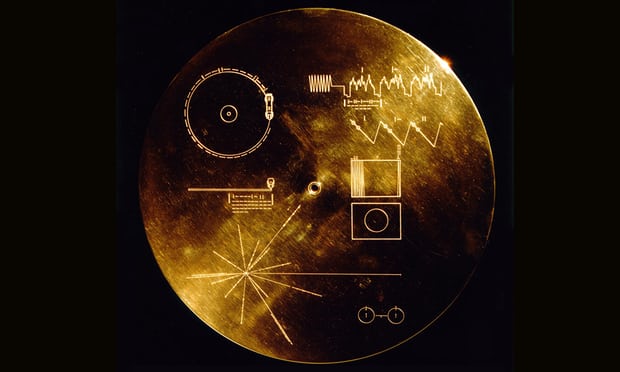But the Golden Record, blasted into space by Nasa in 1977, may deliver an entirely different message to any extraterrestrials who happen to encounter the cosmic missive, researchers point out.
Rather than the peaceful, intelligent beings that the US space agency hoped to portray, humans may come across as a species that loves to argue, speaks gibberish, and sees beauty in flowers that roar like chainsaws.
The potential for the Golden Record, copies of which are aboard Nasa’s Voyager 1 and 2 probes, to mislead alien life will be raised by researchers at the National Space Society meeting in Los Angeles on Saturday.
Rebecca Orchard and Sheri Wells-Jensen at Bowling Green State University in Ohio say that the record’s 117 pictures, humpback whale sounds, greetings in 54 languages, 20-minute “sound essay” of life on Earth, and 90 minute romp through the planet’s music, is decidedly human-centric.
“The Golden Record is a beautiful artefact and representation of how humans want to see themselves, but it is meant to be received by and interpreted by something that has the sensory capabilities of the average human,” said Orchard. “If the second one of these senses is absent, or an entirely different sense is added, the Golden Record becomes a bit confusing.”
Orchard and Wells-Jensen went through the material on the record and considered what an alien civilisation with a different suite of senses might make of it. The barrage of greetings “pile up in a way that could be construed as arguing”, said Orchard, in a language that has “no grammatical congruity”. That is, if they can hear.
The 12-inch gold-plated copper disc has audio on one side and images on the other, and this could lead to further misunderstandings, the researchers believe. If an alien civilisation tried to match sounds to their objects, life on Earth can look very strange. “What if you pair the image of an open daffodil with the roar of a chainsaw?” said Orchard.
Perhaps the most baffling of all would be the music which ranges from Bach and Stravinsky to Javanese gamelan and Bulgarian folk music. “I obviously can’t say how these differences and transitions will be interpreted, but what I can say is that it definitely creates a puzzle for a listener who would be completely unfamiliar with humans and the noises they make,” Orchard said.
Whatever confusion the record may cause, it is unlikely to happen soon. While Voyager 1 is now 12bn miles away and the farthest human-made object from Earth, it will be 40,000 years before it comes close to another star system.
“What this project has shown me is that we can’t really control the impression we make,” said Orchard. “I think the fact of the satellite itself will do a lot of the talking. I would hope that the mere fact that we’ve endeavoured to send a record of humanity shows something about our humanity.”
More about: #NASA
















































